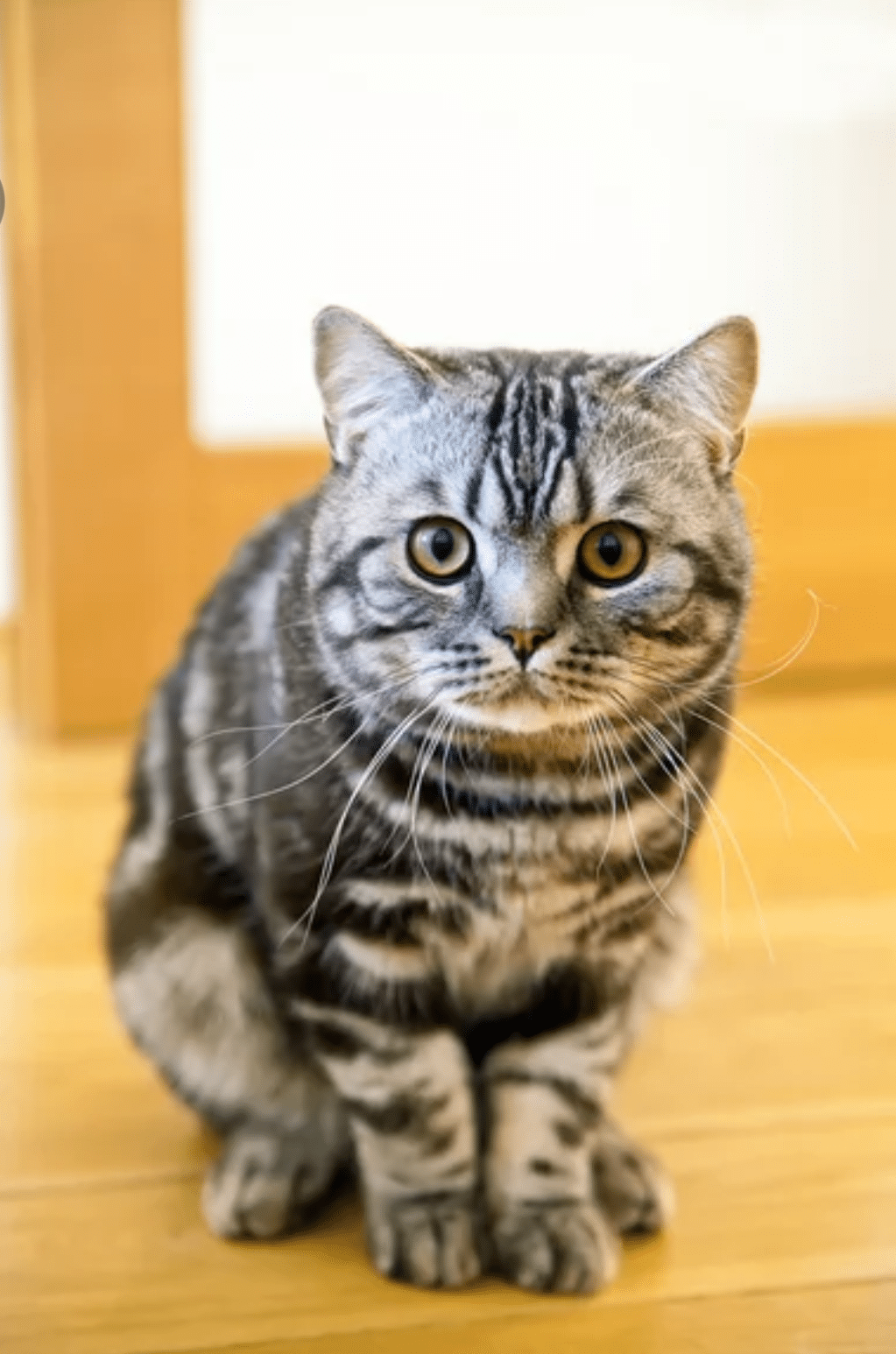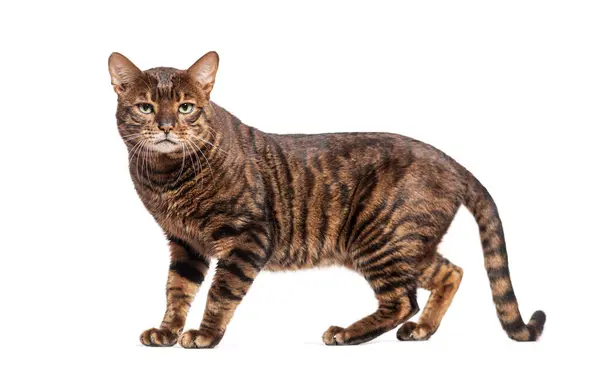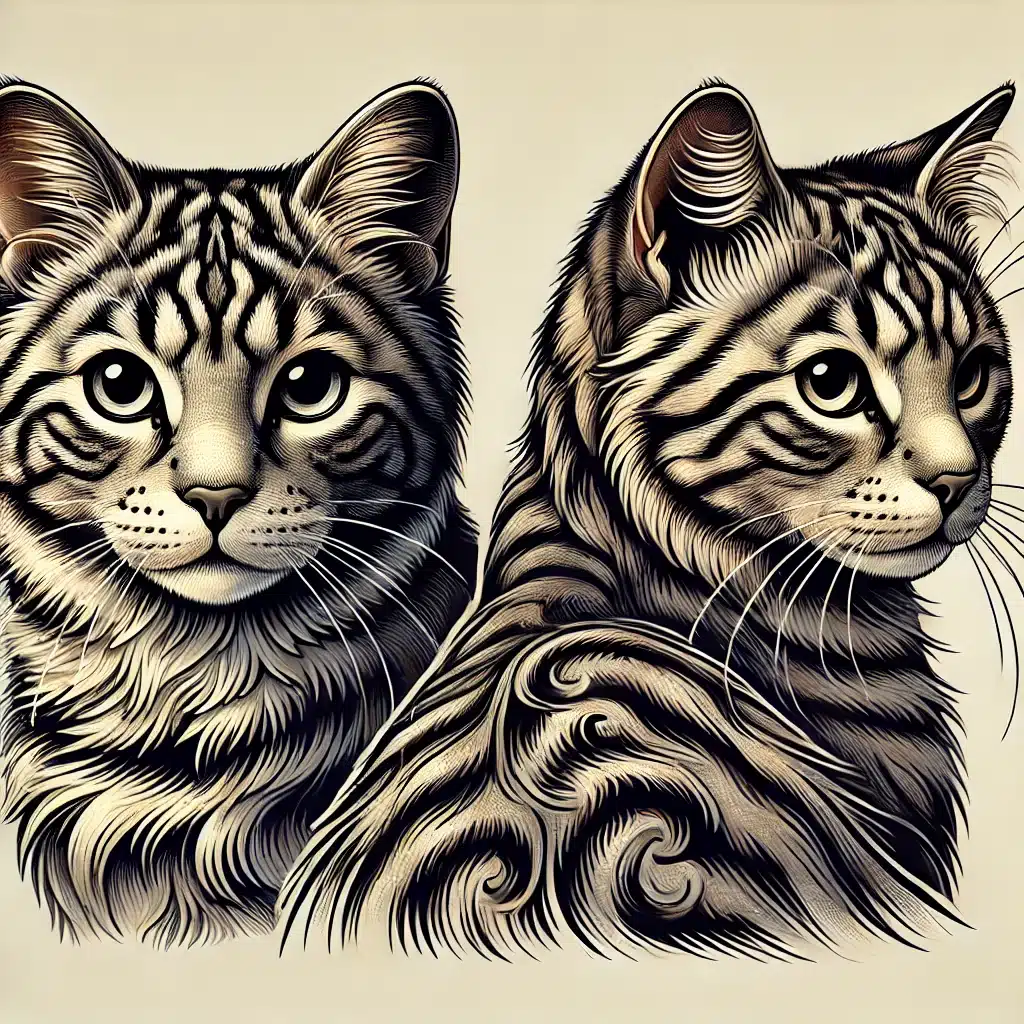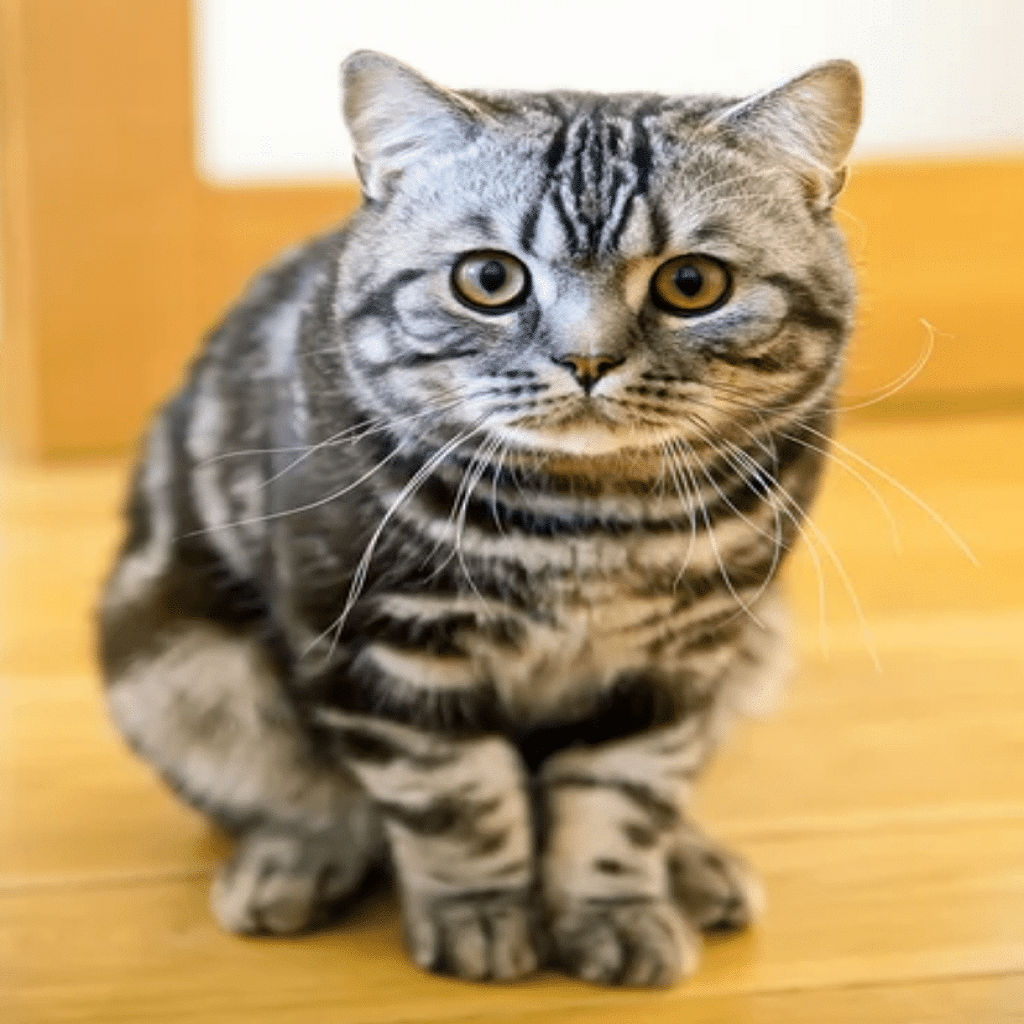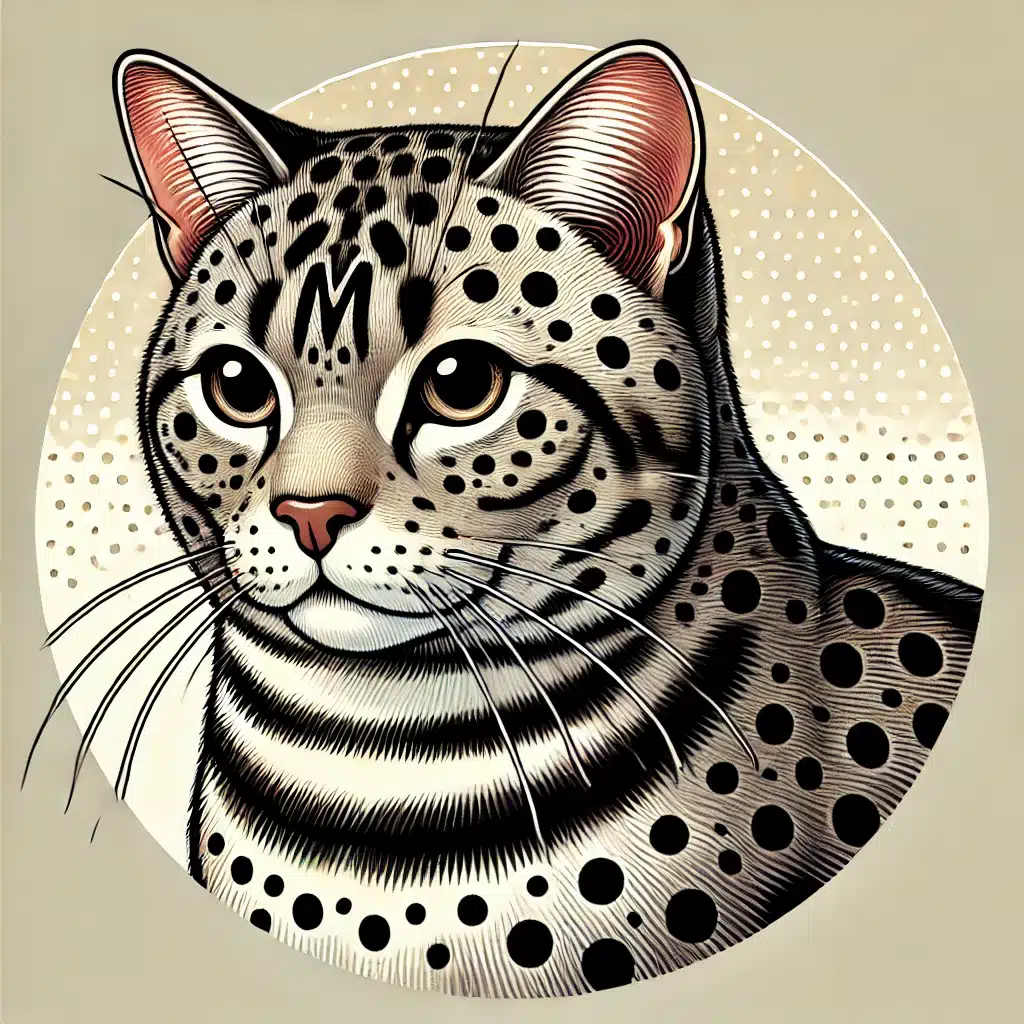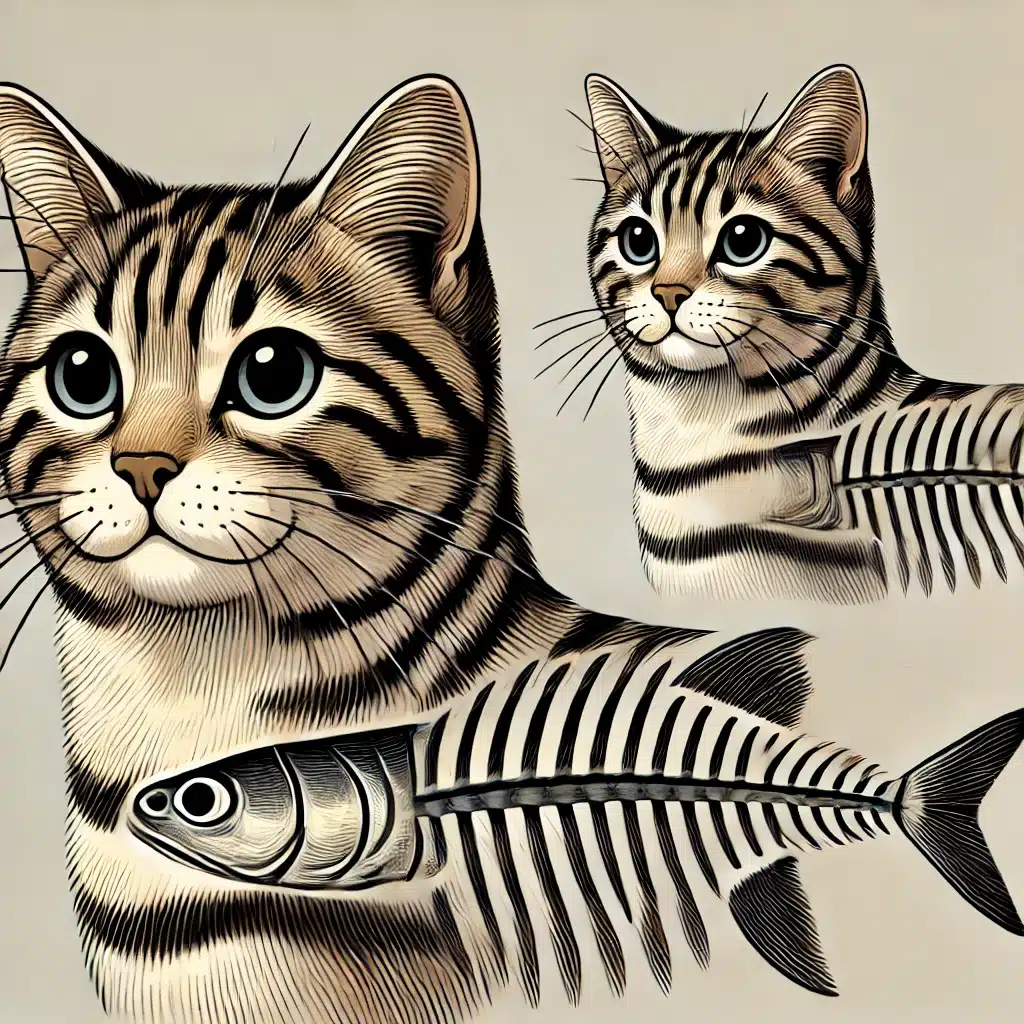Looking to understand the magic behind your cat’s unique look? This Complete Guide is for cat parents, breeders, and anyone considering adopting a new furry friend 🐾.
Cat coats aren’t just pretty—they can also tell us a lot about a cat’s care needs and quirks.
As a Persian cat parent of three—including one with an adorable black-and-white coat—I know firsthand that understanding these coat patterns can help you choose and care for the perfect cat.
We’ll dive into the genetics and biology of cat coats in simple, clear terms—no science degree required. So, let’s explore the world of feline colors and patterns together!

Table of Contents
- Understanding Different Types of Cat Coats
- Understanding Cat Coat Colors and Patterns
- Types of Cat Coat Patterns
- Bicolor Cat Pattern and its Types
- Tricolor Patterns
- What Are Some Of The Rare Cat Colors?
- Coat Variations and Unique Patterns
- Choosing a Cat Based on Coat Color and Pattern
- Genetic Factors Explained
- FAQs on Cat Coat Colors and Patterns
- 2. What Is the Difference Between a Calico and a Tortoiseshell Cat?
- 3. What Are Bicolor Cats?
- 4. Can Two Solid-Colored Cats Have Patterned Kittens?
- 5. What Is a Dilute Cat?
- 6. What Is a Ticked Tabby?
- 7. Why Do Colorpoint Cats Have Darker Extremities?
- 8. What Are Smoke Cats?
- 9. Are Certain Patterns Linked to Specific Breeds?
- 10. What Makes Silver and Golden Cats Unique?
- 11. Why Are Most Calico and Tortoiseshell Cats Female?
- 12. What Is a Rare Coat Pattern in Cats?
- 13. Can Cat Coat Colors Change Over Time?
- 14. Are Certain Coat Colors Linked to Personality?
- 15. What Is the Rarest Cat Coat Color?
Understanding Different Types of Cat Coats
Types of Cat Coat Lengths
A cat may develop one of four different types of coat lengths. Let’s explore these here:
Short-haired
Medium-haired
Long-haired
Hairless
| Short-haired: | |
| These cats are super popular, with sleek, short fur that’s easy to maintain. Ideal for low-shedding, no-fuss grooming, they’re perfect for busy cat parents. | 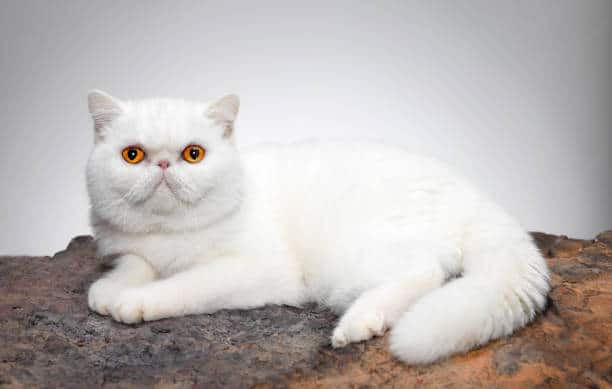
|
| Medium-haired: | |
| Often called semi-long-haired, these cats have a blend of short and long fur that adds texture and volume. You’ll often see this length in mixed-breed kitties, giving them a uniquely fluffy look. | 
|
| Long-haired: | |
| Recognizable by their luxurious, fluffy coats, these cats have long hair all over and require regular grooming to avoid matting. Think of breeds like Persians or Maine Coons. | 
|
| Hairless: | |
| Not completely bald, hairless cats actually have a thin, soft fuzz on their skin. Their “bare” appearance can show off cute wrinkles, especially as they age—adding to their unique charm. | 
|
Types of Cat Coat Textures
A cat’s coat can have one of several unique textures, each with its own charm and care needs. Let’s take a closer look:
Wire-haired/Coarse
Smooth/Short-haired
Dense
Silky/Long-haired
Curly or Wavy
| Wire-haired/Coarse: | |
| With a rough, bristly texture, these coats are common in Wirehair breeds. They offer protection in rough environments, don’t mat as easily, and only need occasional grooming. | 
|
| Smooth/Short-haired: | |
| Found in breeds like Domestic Shorthairs, these cats have sleek, shiny coats that don’t mat easily and shed minimally. Great for those who want a low-maintenance option. | 
|
| Dense: | |
| Recognizable by their luxurious, fluffy coats, these cats have long hair all over and require regular grooming to avoid matting. Think of breeds like Persians or Maine Coons. | 
|
| Silky/Long-haired: | |
| Breeds like Persians and Maine Coons have soft, silky coats that require regular grooming to avoid tangles. Their fluffiness gives them a lovely, cloud-like appearance. | 
|
| Curly or Wavy: | |
| Cats like Devon Rex and Selkirk Rex sport unique curly or wavy fur that’s both fun to touch and low-shedding. These coats need extra care but are great for those with mild cat allergies. | 
|
Understanding Cat Coat Colors and Patterns
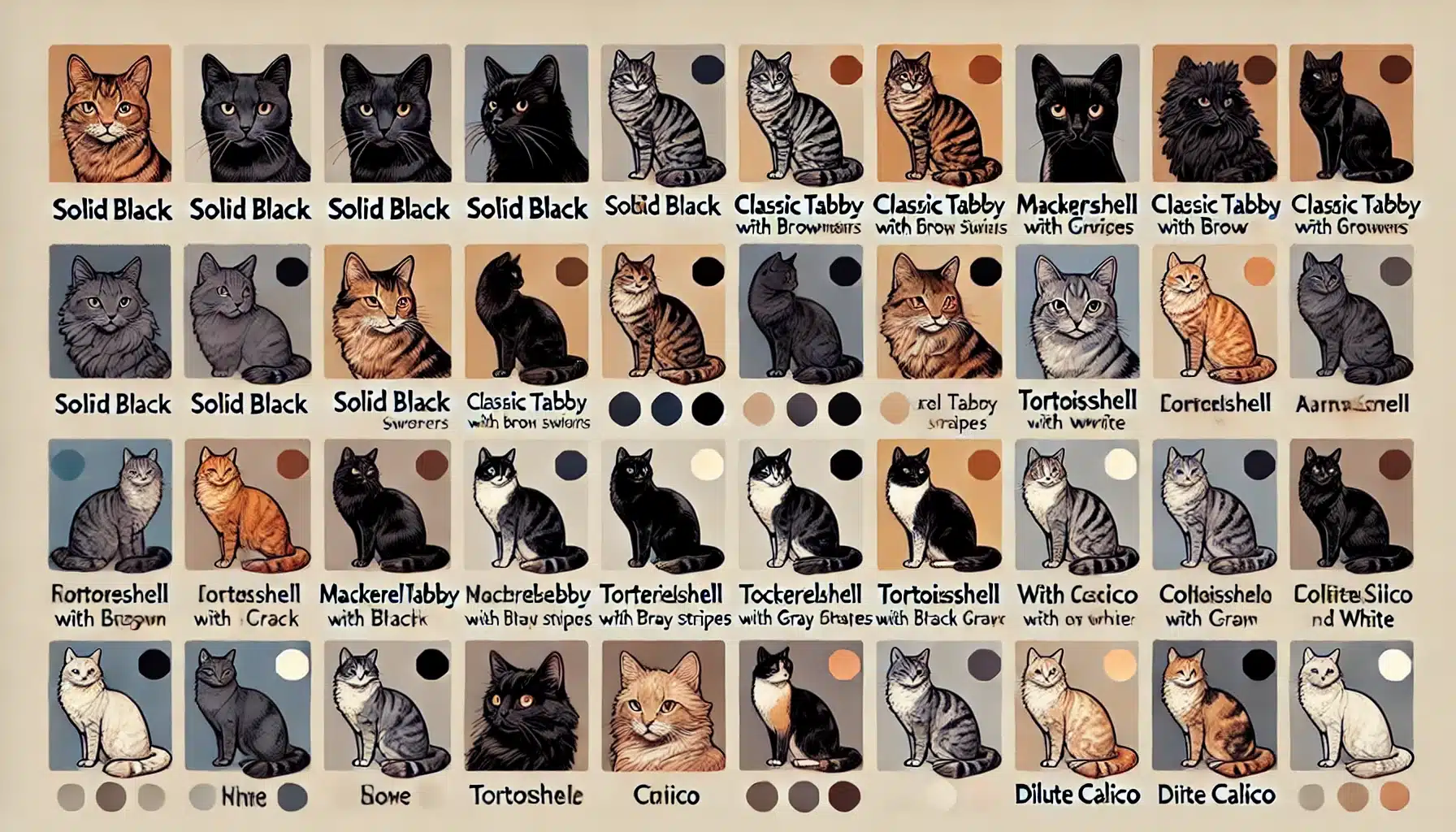
Cats come in a stunning variety of colors and patterns, each more fascinating than the last. Let’s begin with the simplest pattern—solid coats—and dive into the common and rare colors you might encounter.
Solid Cat Coat Pattern
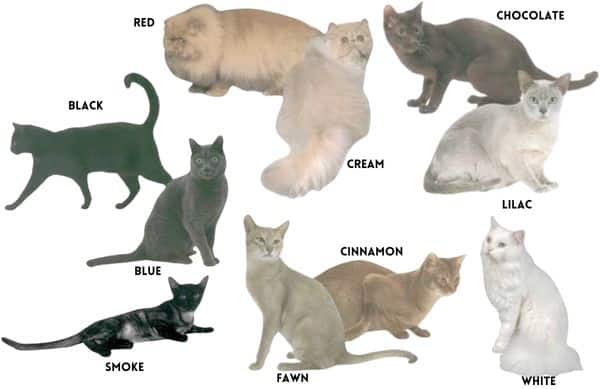
| |
| A solid-colored cat has a single, consistent color all over its body. This pure color can be classic black, or it might show up as another shade like brown, blue (gray), lilac, fawn, or cinnamon—thanks to a special gene that “dilutes” black into these softer tones. | |
| Breeds Known for this Pattern or Color | Genetic Factor |
| Bombay: Sleek, solid black coats and golden eyes give them a panther-like look. British Shorthair: Often blue or lilac, with a dense, plush coat for a classic solid style. Russian Blue: Known for their elegant, blue-gray coats that showcase a smooth, solid look. Chartreux: Exclusively solid blue, often mistaken for Russian Blues with their soft, plush coats. | Solid coats result from the absence of the agouti gene (a/a), which prevents tabby patterning. This gene creates a smooth, solid color across the entire coat, making the cat look sleek and uniform. |
Solid coats are just one way genetics add to the beauty of our feline friends. As we explore other patterns, you’ll see how the combination of genes creates unique and eye-catching designs!
Common Colors
One of the most delightful aspects of cats is the incredible variety in their coat colors and patterns, giving each cat a look and personality all their own.
Whether you’re a first-time cat parent or a seasoned breeder, exploring the range of colors helps you appreciate just how unique each cat can be. Plus, understanding coat colors can make choosing the right cat even more exciting!
Here are some of the most common colors you’ll see in cats—many of which are especially popular among adopters: Tuxedo, calico, and tabby are just a few examples of beloved feline colorations. One particularly striking option is the bicolor cat coat patterns, where the cat displays two distinct colors, often alternating between white and another shade like black, gray, or orange. These patterns can vary tremendously, making each cat truly unique.
Understanding these common colors can give you a great starting point when looking for a new furry friend. Each color has its own charm, and exploring them helps you see the wonderful variety in the feline world!
Black
White
Gray
Brown
Orange
Cream
| Black | |
| Sleek and striking, black cats have a mystique that makes them stand out. Their solid, midnight-colored coats are often associated with mystery and elegance. | 
|
| White | |
| Often a symbol of purity, white cats have a timeless beauty. Their snowy coats can be short or long, with a smooth or fluffy texture that adds to their charm. | 
|
| Gray (Blue) | |
| Known for its soft, silvery look, gray (sometimes called “blue”) is a popular color, especially in breeds like Russian Blues or British Shorthairs. These cats often have a cool, calm vibe to match their sophisticated appearance. | 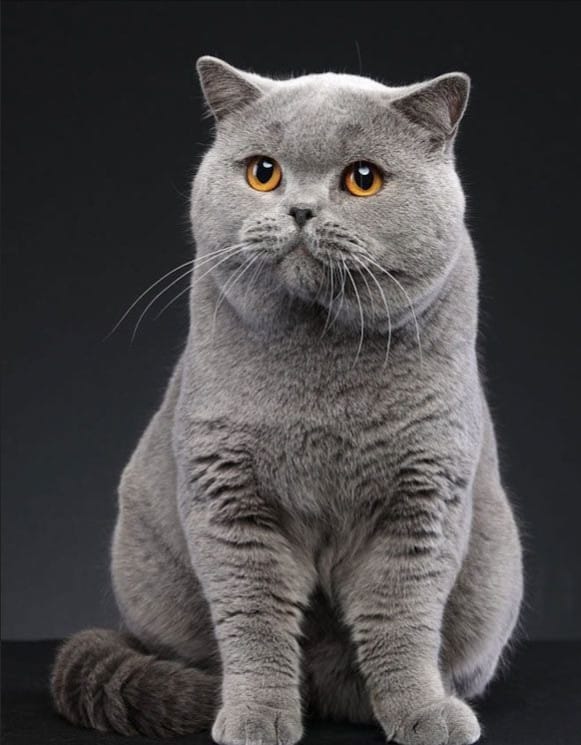
|
| Brown | |
| Brown cats may be less common, but they have a rich, earthy look that feels warm and inviting. Their coats are usually a blend of dark and lighter browns, giving them a natural, cozy appeal. | 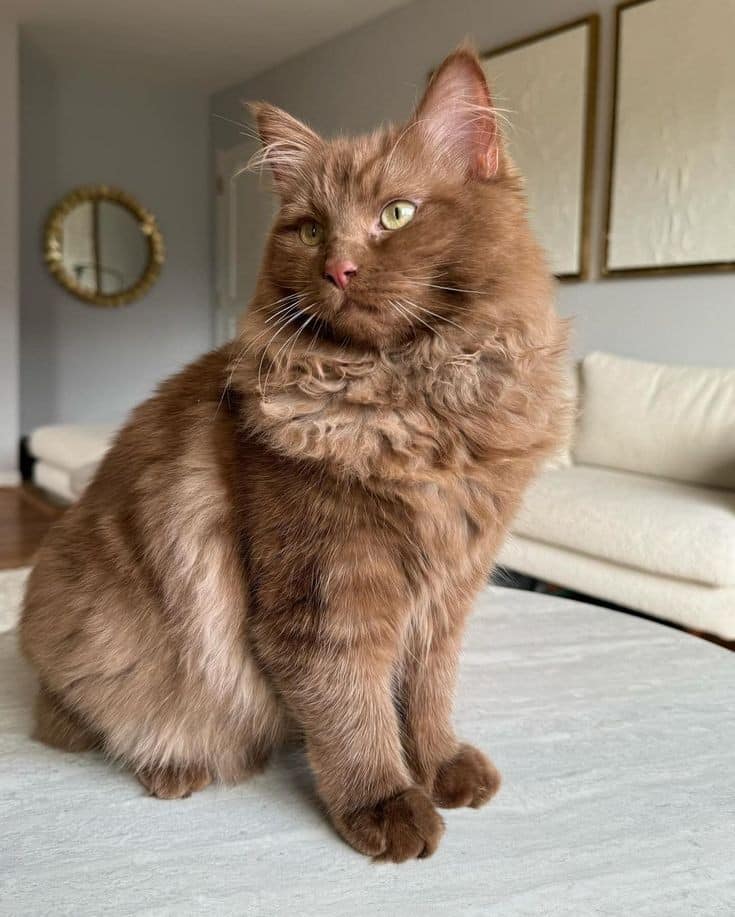
|
| Orange (Ginger) | |
| Orange or ginger cats are known for their lively and friendly personalities. Their bright, sunny coloring is often seen in tabby patterns, adding even more character to their look. | 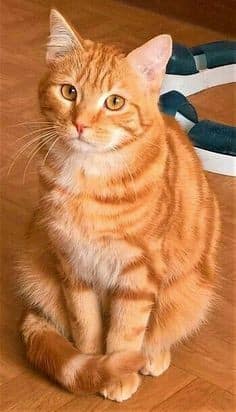
|
| Cream | |
| Cream-colored cats have a soft, almost pastel tone that’s both calming and eye-catching. This color is often found in cats with dilute genes, making them a lighter version of their orange or brown counterparts. | 
|
Rare Colors
While many cats have coats in familiar colors like black, white, or orange, some cats possess rare and unique hues that truly stand out.
These rare colors not only catch the eye but also offer a touch of exclusivity for those looking for something extraordinary.
Here are some of the most uncommon cat colors you might encounter, each one more impressive than the last:
| Lilac (Lavender) | |
| Soft and subtle, lilac cats have a pastel-like, purplish-gray hue that’s delicate and almost ethereal. This color is typically seen in breeds like British Shorthairs or Burmese, giving them a gentle and distinguished look. | 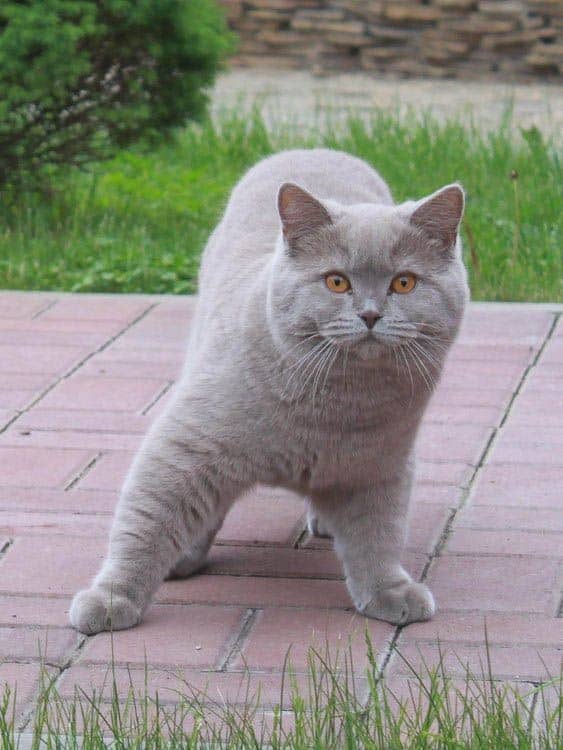
|
| Chocolate | |
| Chocolate-colored cats have a rich, deep brown coat that’s rarely seen and highly prized. This luxurious color has a warmth and depth that make these cats look especially elegant and unique. | 
|
| Cinnamon | |
| This shade is a lighter, warm-toned brown, almost like a reddish-brown spice. Cinnamon-colored cats are not common, and their coats have an inviting warmth that’s truly eye-catching. | 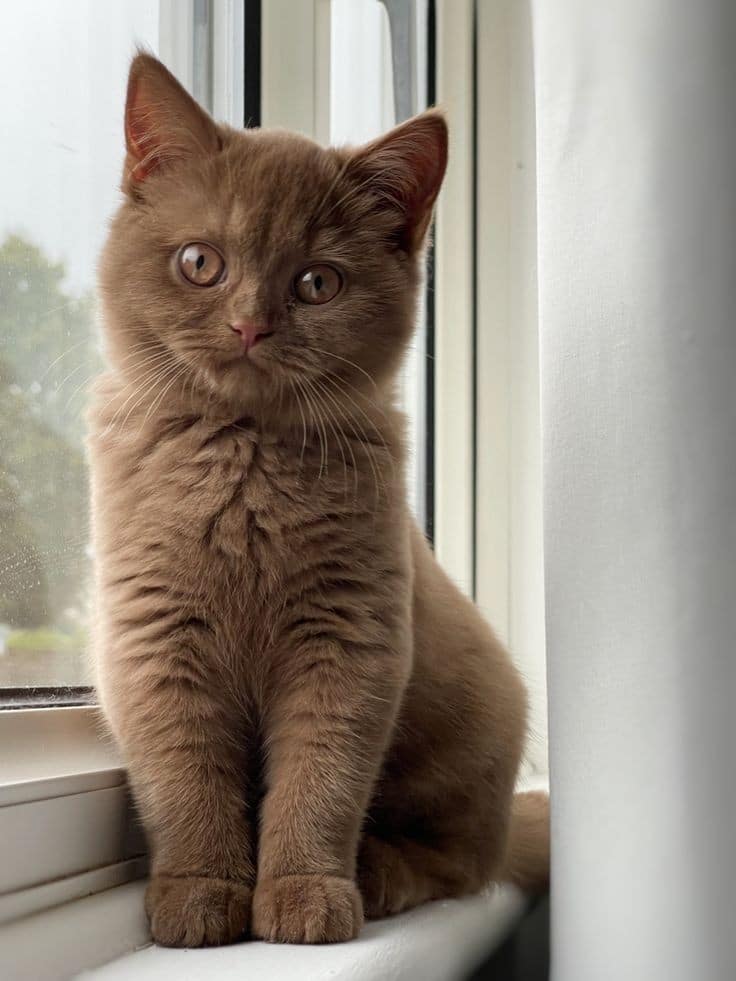
|
| Caramel | |
| With a mix of cool brown and warm undertones, caramel-colored cats have a soft, muted hue that’s both subtle and rare. This color is particularly captivating for those who appreciate unique shades beyond the usual spectrum. | 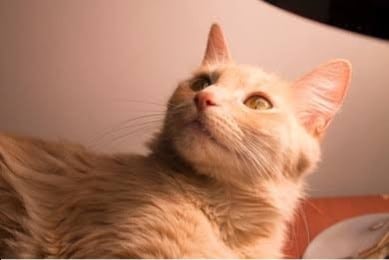
|
| Champagne | |
| A very pale, creamy color with soft beige tones, champagne cats have a delicate look that’s hard to resist. This color gives them a sophisticated appearance, often making them a standout choice for those seeking a rare coat. | 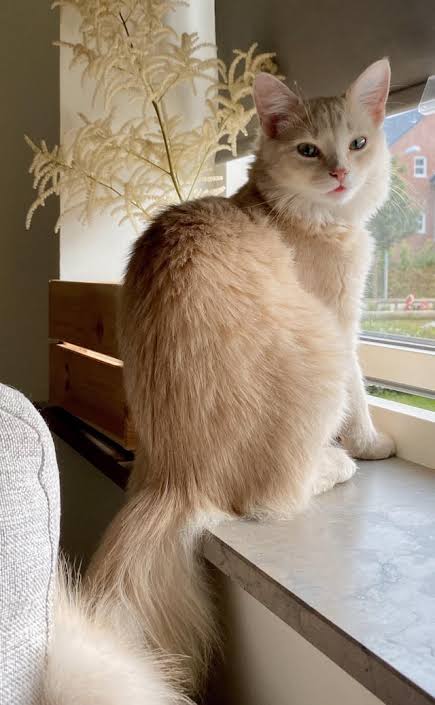
|
| Smoke and Shaded | |
| Smoke and shaded cats have a color gradient that creates a stunning visual effect. With a base coat of one color that gradually fades into lighter or darker shades (like Shaded Silver or Shaded Golden), these cats look as if they’re shimmering in the light. Their striking appearance is sure to turn heads | 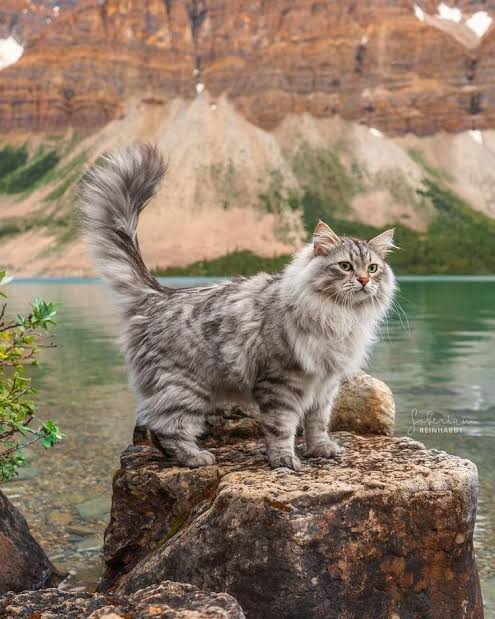 |
These rare colors are a true treasure in the world of cats. Whether you’re drawn to the soft elegance of lilac or the dramatic beauty of shaded coats, these unique colors can make any cat feel like one-of-a-kind.
Types of Cat Coat Patterns
Cats come in an amazing variety of colors and patterns, and each one is a work of art. Whether your cat is a pure color or has intricate markings, understanding their pattern can give you a new appreciation for their unique look. Let’s dive into the different types and see just how your kitty got so gorgeous! Some common coat patterns include tabby, tortoiseshell, and calico, all of which exhibit beautiful blends of colors and stripes or patches.
These striking black-and-white cats have been admired for centuries, not only for their elegant appearance but also for the fascinating genetic combinations that create their distinctive look. Whether your cat is bold and bicolor or a mix of many shades, their coat is a testament to the rich diversity found in feline genetics and the long history we share with them.
Tabby Cat Patterns: | |
| The tabby coat is one of the most recognizable cat patterns, featuring iconic stripes, swirls, or spots. Each tabby cat has its own unique pattern, but many share a distinct “M” marking on their forehead. Tabby patterns come in four main variations: Classic, Mackerel, Spotted, and Ticked. | |
| Breeds Known for this Pattern or Color | Genetic Factor |
| Bombay: Sleek, solid black coats and golden eyes give them a panther-like look. British Shorthair: Often blue or lilac, with a dense, plush coat for a classic solid style. Russian Blue: Known for their elegant, blue-gray coats that showcase a smooth, solid look. Chartreux: Exclusively solid blue, often mistaken for Russian Blues with their soft, plush coats. | The Agouti gene (A) is the primary factor in tabby patterning. This gene controls the distribution of pigment in the fur, allowing the tabby pattern to be visible. Variants in the tabby gene (such as Mc for mackerel or mc for classic) determine the specific pattern style. |
Types of Tabby Patterns:
| Mackerel Tabby Also known as Striped Tabby Coat Pattern Description: Features narrow, vertical stripes along the body, resembling fish bones. | |
| Breeds Known for Mackerel Tabby type | Genetic Factor |
| Egyptian Mau, Oriental Shorthair, Savannah. | Genetic Variant: Dominant over classic (Mc), making it one of the more common tabby patterns. |
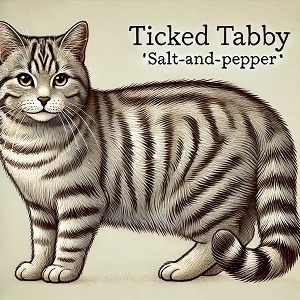
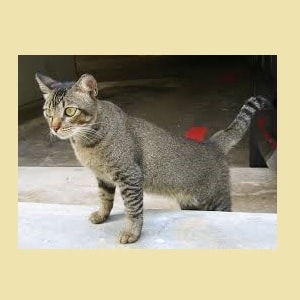
| Ticked (Agouti) Tabby Description: A unique tabby pattern with agouti hairs spread across the coat, creating a “salt-and-pepper” look without traditional stripes. | |
| Breeds Known for Ticked (Agouti) Tabby type | Genetic Factor |
| Abyssinian, Singapura. | Genetic Variant: The ticked tabby gene causes each hair to be banded with multiple colors, giving the coat a fine, even appearance. |
Colorpoint pattern Cat 😺
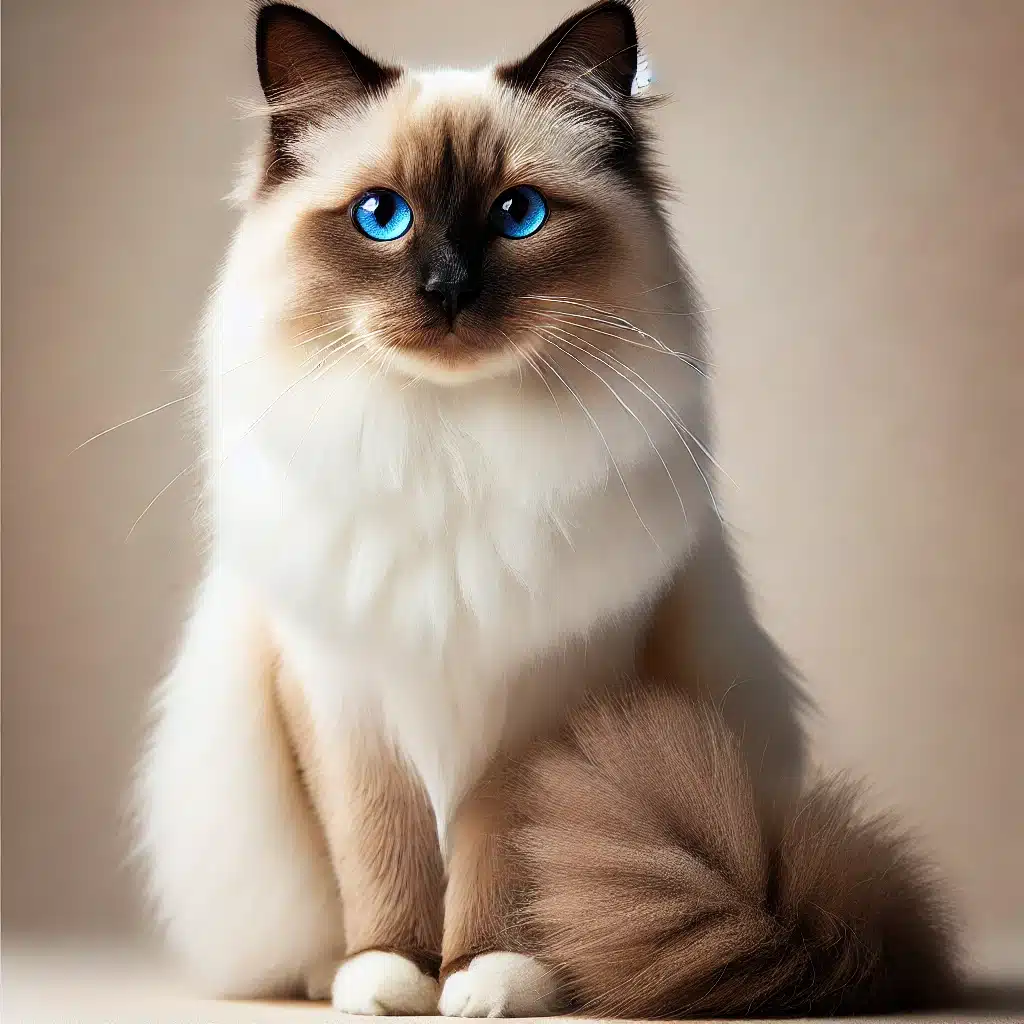 | |
| Colorpoint pattern Cat 😺 Colorpoint Cats 😺are known for their striking contrast between dark extremities—ears, paws, face, and tail—and a lighter body. This pattern is common in breeds like the Siamese, Himalayan, Burmese, and Tonkinese, creating that unique “pointed” look. | |
| Breeds Known for this type | Genetic Factor |
| You’ll spot colorpoints in Siamese, Himalayans, Ragdolls, and Birmans—all flaunting those beautiful, dark points and light bodies with piercing blue eyes 💙! Seal Point Color 🖤: One of the most famous colorpoint coats, seal points have an ivory or cream-colored body with rich black or brown points on the face, ears, paws, and tail. That’s why these stunning dark shades cluster on their extremities—making them so memorable! | The colorpoint coat is thanks to a genetic mutation that makes pigment production sensitive to temperature. The enzyme tyrosinase causes darker coloration on the cooler parts of the body, like the face, ears, paws, and tail—keeping the body lighter in warmer areas 🌡️. |
Bicolor Cat Pattern and its Types
Black and White Cat Patterns 🖤🤍
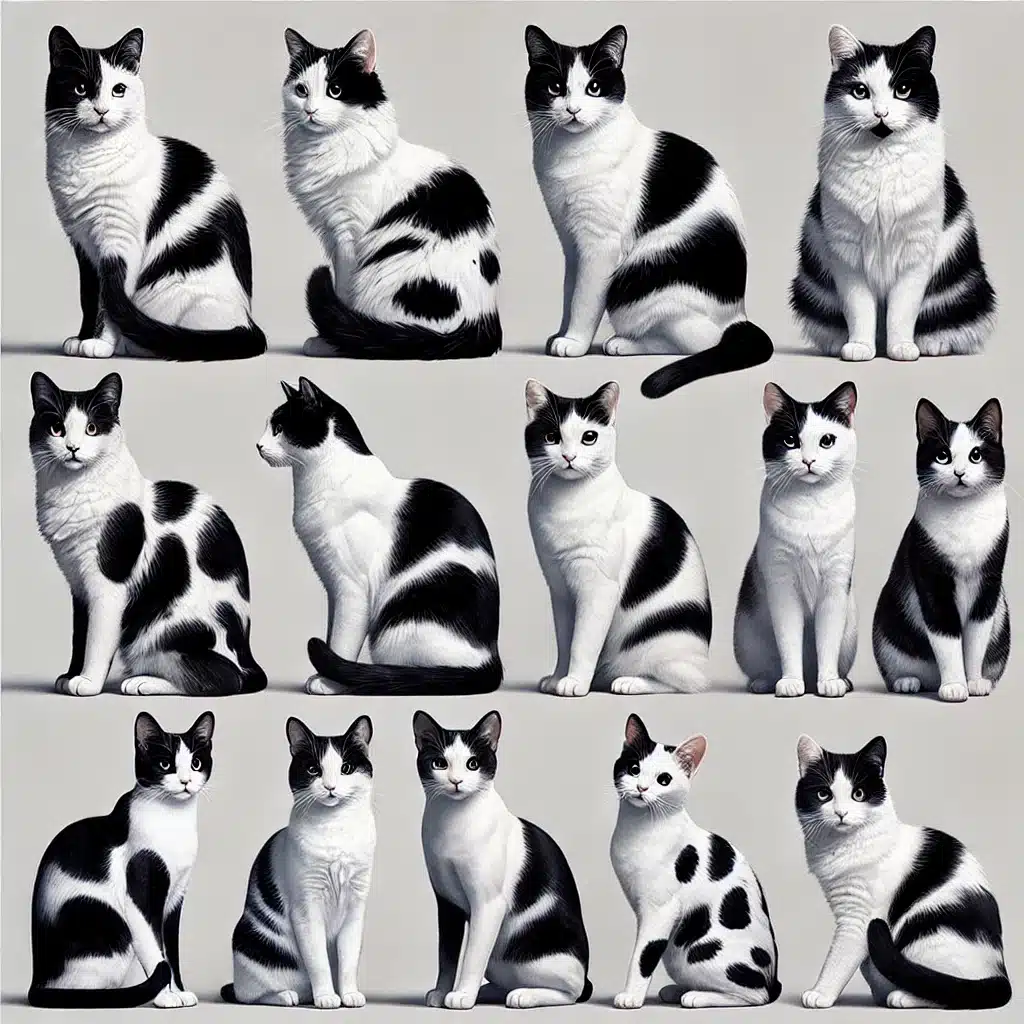 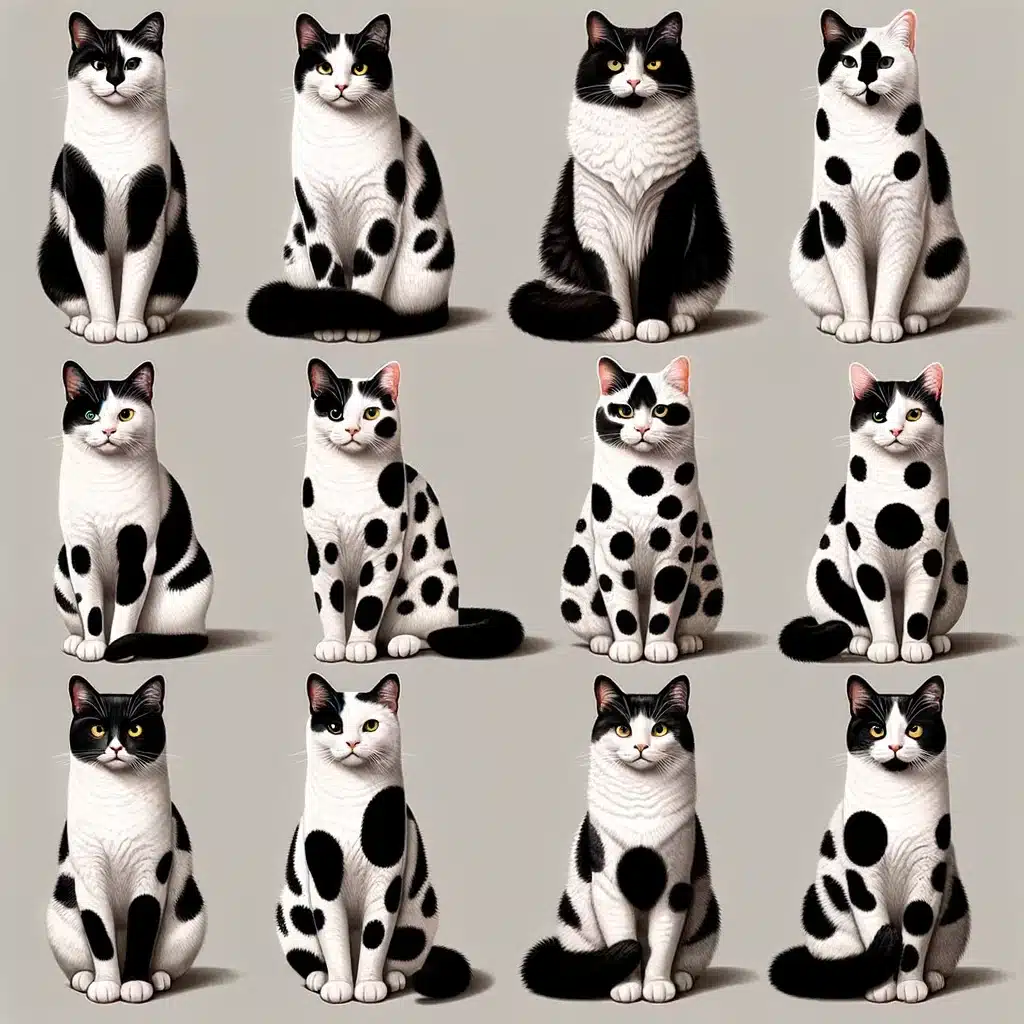 | |
| What Are Bicolor Cats? 😺 Bicolor cats feature a mix of two colors, typically white paired with another color like black, orange, or gray. They range from mostly solid with a small white “locket” to nearly all white with a few colored patches. | |
| Common black and white cat breeds | Genetic Factor |
| American Shorthair, Maine Coon, British Shorthair, Persian, Ragdoll, Turkish Van, Norwegian Forest Cat, Domestic Shorthair, and Exotic Shorthair. These breeds often display stunning black and white patterns, from classic tuxedos to cow spots. | bicolor breeds often display stunning black and white patterns, from classic tuxedos to cow spots. The white spotting gene (S) is responsible for the balance of color and white patches, resulting in their distinctive appearances. |
Types of Bicolor Cat Patterns🖤🤍
Tuxedo Cat Pattern
 | |
| Tuxedo cats are bicolored with black and white patterns, resembling formal attire 🎩. Their coats are mostly black, with white markings on the chest, neck, paws, and sometimes the face, creating an elegant look. | |
| Breeds Known for this type | Genetic Factor |
| American Shorthair, Maine Coon, British Shorthair, Persian, Domestic Shorthair, and Norwegian Forest Cat. | The white spotting gene (S) controls their iconic black-and-white contrast, with low expression creating the classic tuxedo pattern. ✨ |
Tricolor Patterns
Calico and Dilute Calico Cat Pattern
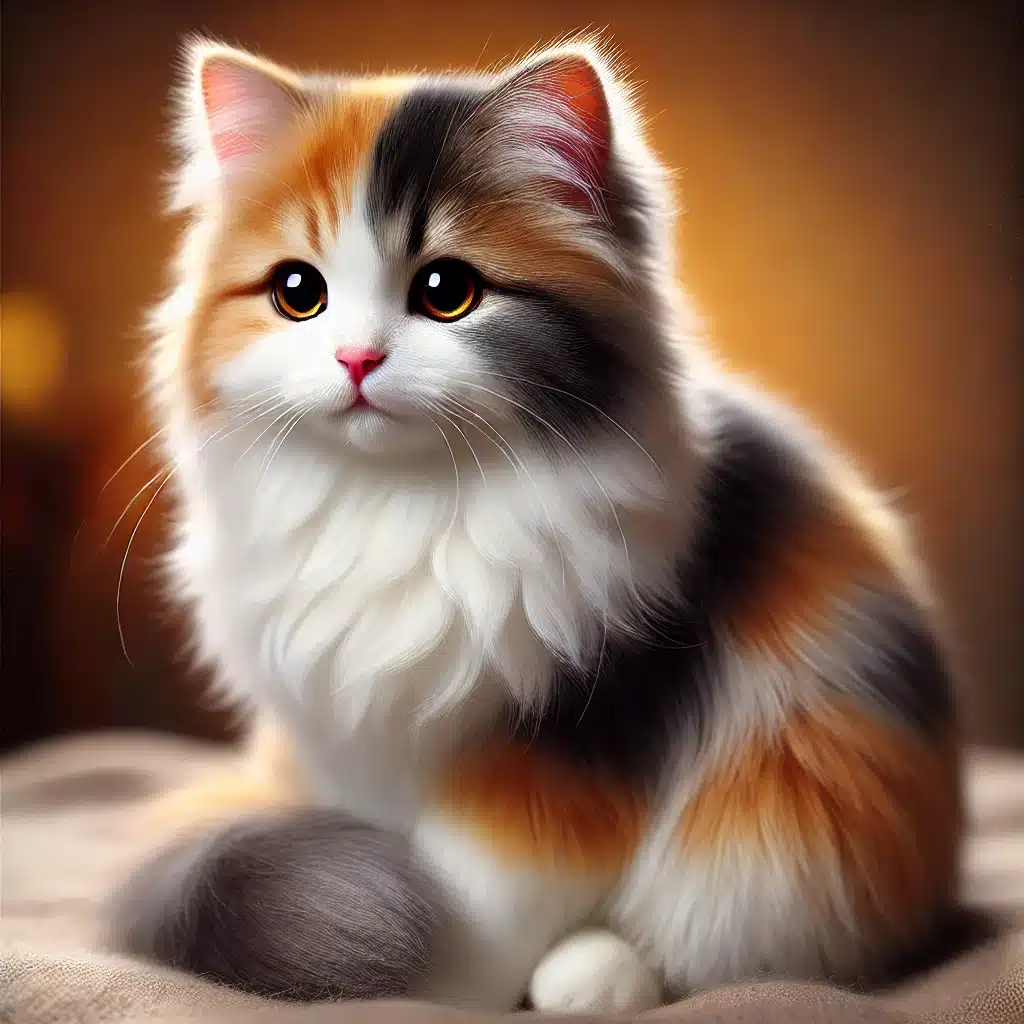  | |
| Tricolor cats, like Calicos and Dilute Calicos, have three colors in their coat: black, orange, and white. In dilute calicos, the black and orange are softened to gray and cream, giving a pastel appearance. These patterns are almost always found in female cats due to their genetic makeup and are prized for their unique, vibrant beauty. Each tricolor coat is a one-of-a-kind masterpiece! | |
| Breeds Known for this type | Genetic Factor |
| Domestic Shorthair, Persian, Japanese Bobtail, and Manx 🐾. | Calico : Similar to tortoiseshell but with additional white spotting from the white spotting gene (S), creating distinct orange, black, and white patches. Dilute Calico : Dilution gene (d/d) changes orange to cream and black to gray. |
Tortoiseshell (Tortie) / Tortoiseshell Cat Pattern:
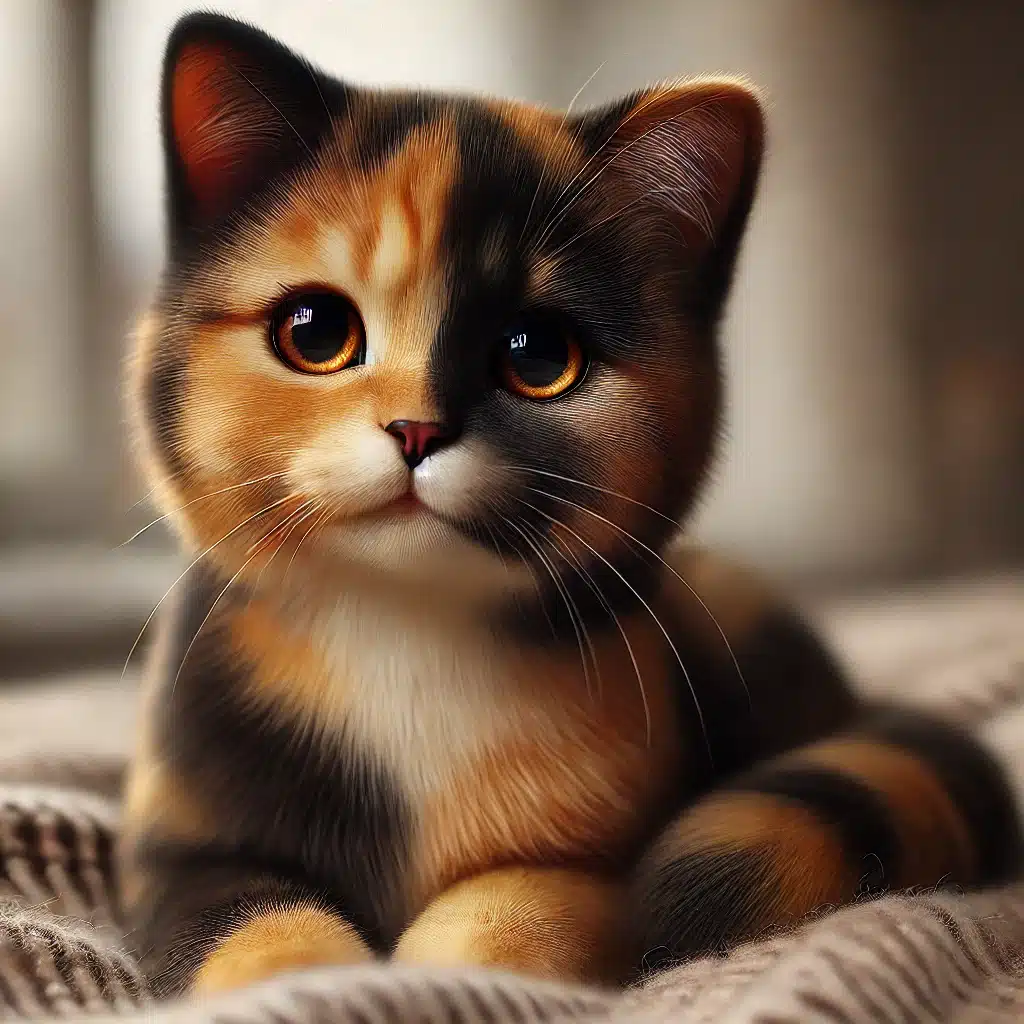 | |
| The tortoiseshell, often called “tortie,” is known for its striking mix of black and orange or gray and cream patches, creating a bold, patchy, and mosaic-like appearance. Many torties have unique personalities, sometimes called “tortitude”—a reputation for spunk and independence! Tortoiseshells can occasionally have white patches, but unlike calicos, white is not a defining feature. | |
| Breeds Known for this type | Genetic Factor |
| Japanese Bobtail: Known for their playful and social demeanor, these cats often display bold tortie patterns. American Shorthair: A classic breed with tortoiseshell variations, known for their friendly and adaptable nature. Cornish Rex: With their unique curly coat, Cornish Rex torties have an eye-catching, soft-textured appearance. | Tortoiseshell patterns are primarily influenced by the X-linked orange gene (O). Since female cats have two X chromosomes, they can inherit both orange and non-orange (black) color genes, leading to the tortoiseshell effect. Male torties are rare and usually occur due to an extra X chromosome (XXY), which allows them to display both black and orange. |
What Are Some Of The Rare Cat Colors?
Shaded Cat Pattern
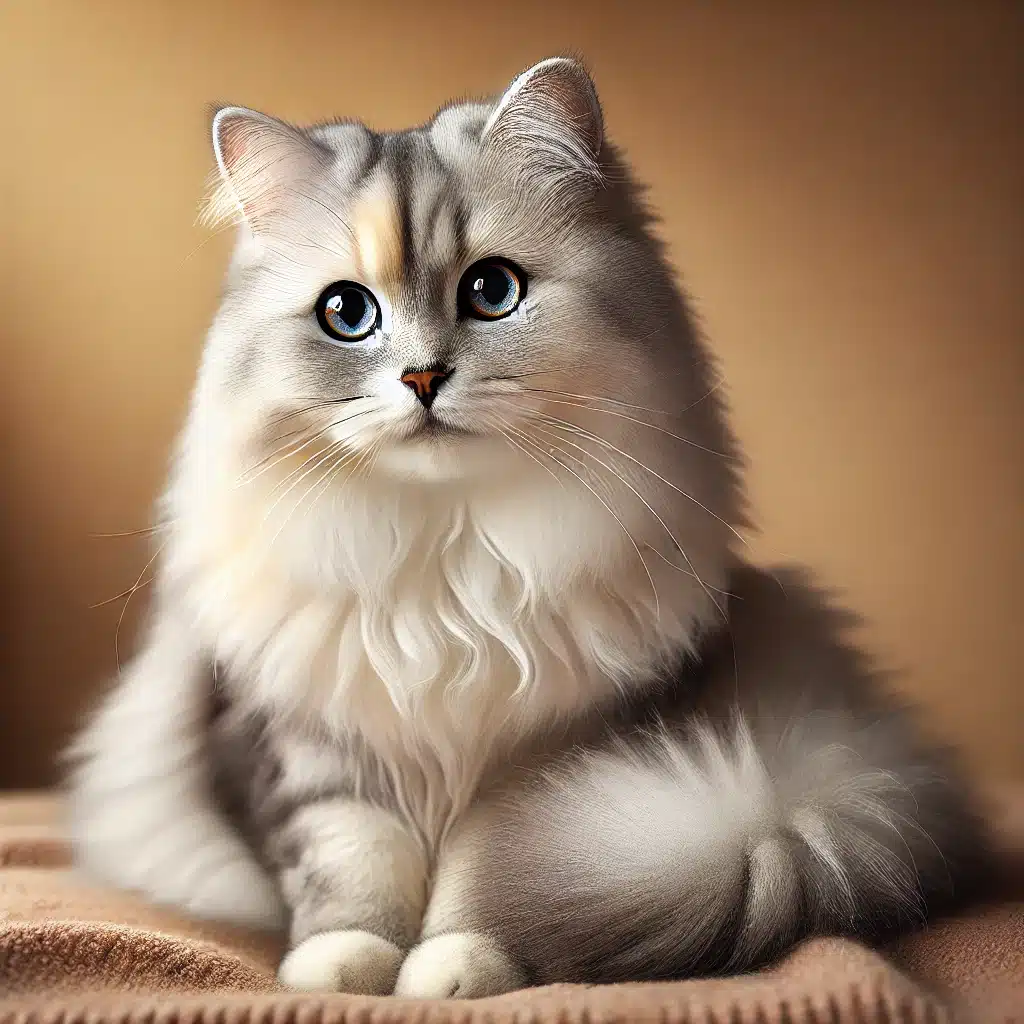 | |
| Shaded Cat Pattern 🌄✨ Shaded cats have a gradient effect on their fur, where color appears only on the outer portion of each hair shaft, creating a subtle, shaded look. This gives their coat a soft, flowing appearance with an almost silvery or golden shine, depending on the base color. | |
| Breeds Known for this type | Genetic Factor |
| Persian (Chinchilla variety), Exotic Shorthair, Burmilla, and British Shorthair 🐾. | Inhibitor gene (I) influences pigment distribution, leading to color only on the outer part of each hair shaft, creating a gradient look. |
Smoke Cat Pattern
 | |
| Smoke Cat Pattern 🌫️🐾 Smoke cats have a striking coat where the tips of the hair are dark, and the base is pure white, creating a smoky, dramatic effect. This unique look adds depth and elegance to their appearance, especially when they move, as the white undercoat shimmers through. Smoke patterns can appear in various colors, including black, blue, and red. | |
| Breeds Known for this type | Genetic Factor |
| Persian, Maine Coon, British Shorthair, and Norwegian Forest Cat 🐱. | Caused by the inhibitor gene (I), which results in a coat where the tips of the hair are dark, while the base is white. |
Key Differences between Smoke pattern and Shaded pattern
| Feature | Smoke Pattern | Shaded Pattern |
|---|---|---|
| Pigment Placement | Dark tips, white base | Pigment only on the outer portion of hair |
| Overall Look | Dramatic contrast, darker overall | Subtle, soft, lighter gradient effect |
| Best Seen | When the fur moves or parts | In natural light, due to the gradient |
| Breed Examples | Maine Coon, Persian, Norwegian Forest Cat | Persian (Chinchilla), Burmilla, Exotic |
Shell / Chinchilla Cat Pattern
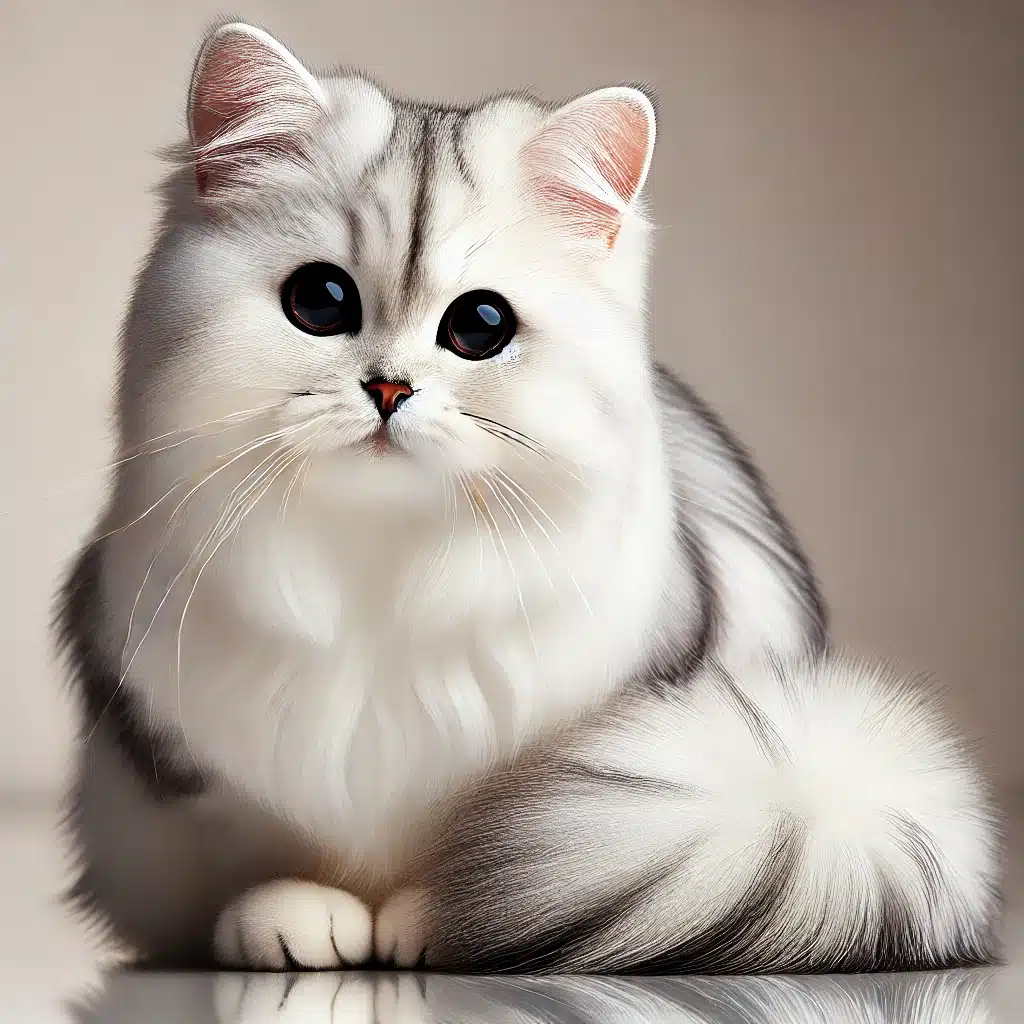 | |
| Shell / Chinchilla Cat Pattern 🌟🤍 Shell or chinchilla cats have an almost white coat with a hint of color at the tips of each hair, giving a shimmering, silvery appearance. This luxurious pattern creates an ethereal, glowing effect, often resembling sparkling snow or a dusting of glitter. It’s one of the lightest and most elegant coat patterns seen in cats. | |
| Breeds Known for this type | Genetic Factor |
| Persian (Chinchilla variety), Exotic Shorthair, British Shorthair, and Burmilla 🐱. | Strong expression of the inhibitor gene (I) leads to very limited color on the tips of each hair, giving a nearly white or silver appearance. |
Agouti / Ticked Cat Pattern
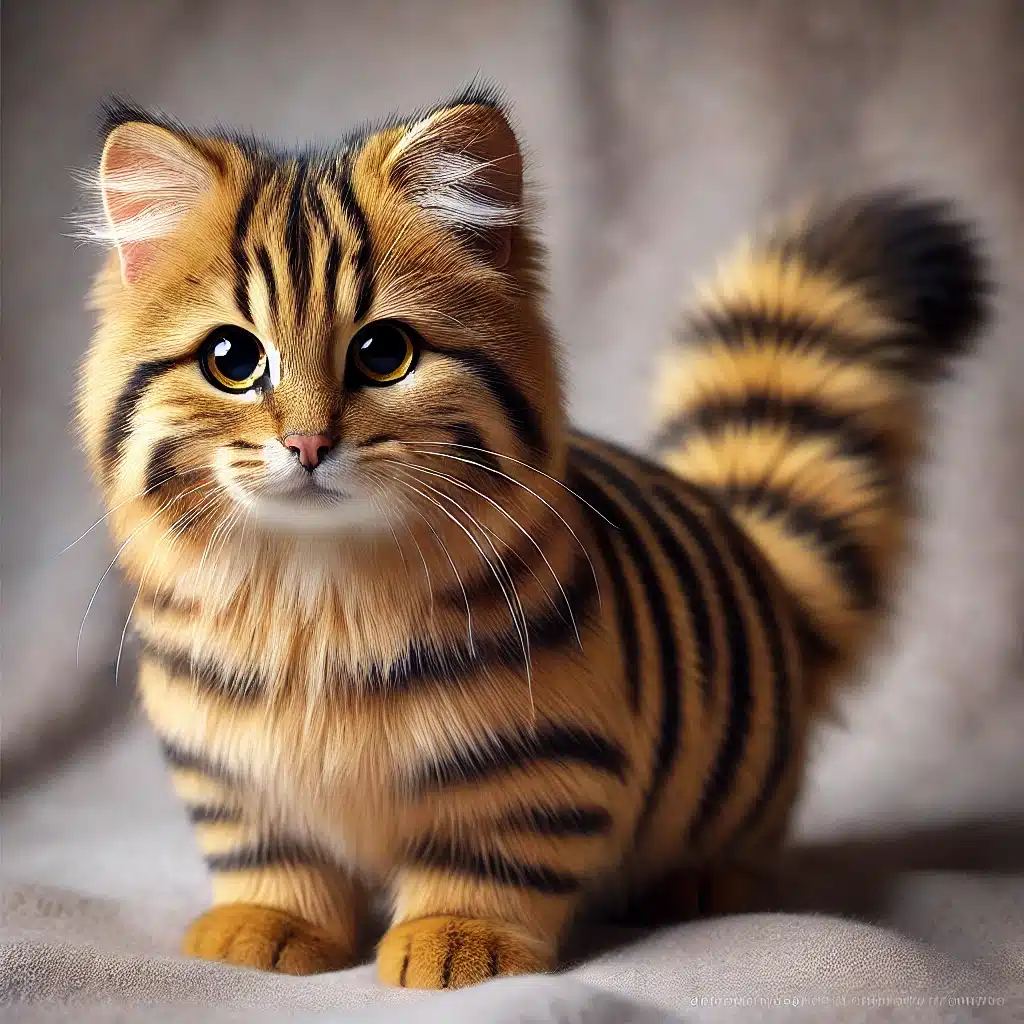 | |
| Agouti / Ticked Cat Pattern 🌾🐾 Agouti or ticked cats have individual hairs with alternating bands of light and dark pigment, creating a speckled, salt-and-pepper effect. This pattern gives a soft, wild look and is a hallmark of cats with a natural, undomesticated appearance. Ticked coats lack traditional stripes or spots. | |
| Breeds Known for this type | Genetic Factor |
| Abyssinian, Somali, Singapura, and Burmese 🐾. | Ticked tabby gene, producing an agouti pattern without stripes. |
Coat Variations and Unique Patterns
Harlequin Cat Patterns 🎨🤍

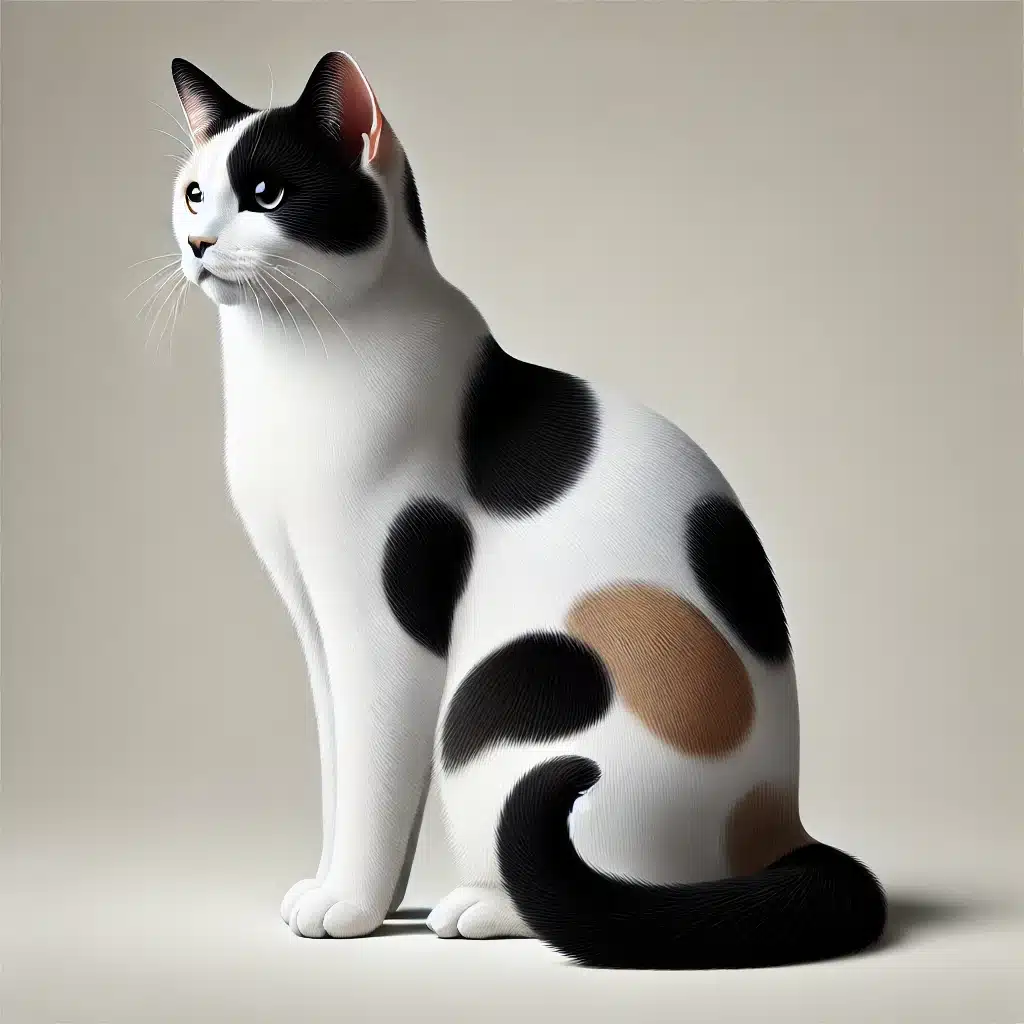
| Harlequin Cat Pattern 🎨🤍 Harlequin cats are predominantly white with patches of solid colors like black, red, brown, cream, or gray. Their tails are typically a solid color that matches their patches, creating a striking and elegant look. These cats can be bicolored or tricolored, but white always dominates their coat. | |
| Breeds Known for this type | Genetic Factor |
| Persians, Japanese Bobtails, Turkish Vans, Ragdolls, and Norwegian Forest Cats 🐾. | The white spotting gene (S) determines the large white areas and the placement of colored patches, giving Harlequins their unique, artistic appearance ✨. |
The unique beauty of harlequin cats, with their striking patches of color against a predominantly white coat, adds an extra layer of charm to the feline world. Their unpredictably patterned coats make them stand out as a delightful rarity among cat breeds. With so many captivating colors and patterns, every cat possesses its own individual allure.
Van Cat Pattern
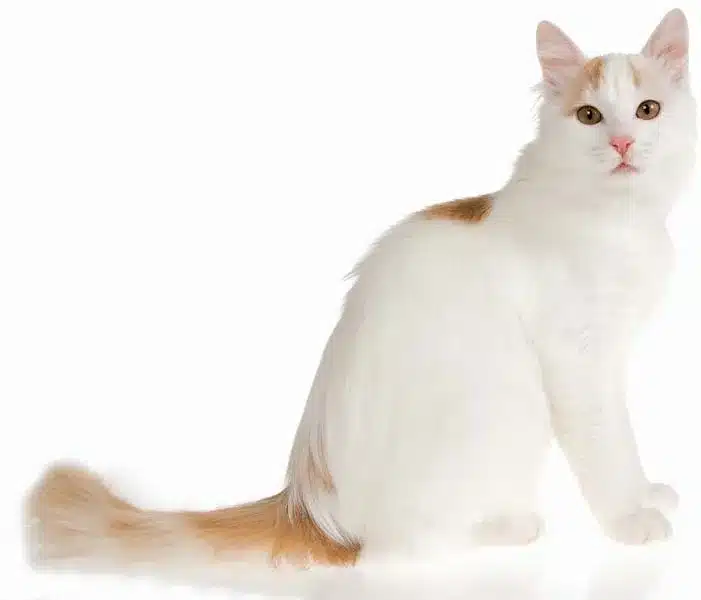 | |
| Van Cat Pattern 🤍🐾 Van-patterned cats are predominantly white with color restricted to their head and tail, sometimes with small splashes on their body. Common colors include black, red, cream, or tabby patterns, paired with a solid-colored tail. This rare and striking pattern is often associated with an elegant and clean look. The majority of their coat remains a pristine white, making the colored areas stand out beautifully. | |
| Breeds Known for this type | Genetic Factor |
| Turkish Van, Turkish Angora, Domestic Shorthair, and Persian 🐱. | High expression of the white spotting gene (S), with color only on the head and tail. |
Some cats even have a coat that mirrors the piebald pattern seen in other animals, which often leads people to wonder about magpie cat origin and history.
Magpie Cat Pattern

| |
| Magpie Cat Pattern 🎨🤍 Magpie cats are predominantly white with randomly placed asymmetrical patches of black or other colors. These markings can appear on the face, body, or tail, giving each cat a unique and whimsical appearance. The randomness of the patches creates a playful, artistic look that makes magpie cats stand out. Their distinctive coat pattern often feels like nature’s abstract art! | |
| Breeds Known for this type | Genetic Factor |
| British Shorthair, Domestic Shorthair, Persian, and Turkish Van 🐾. | Expression of the white spotting gene (S) with random, asymmetric black or colored patches on a white coat. |
Cow Cat Pattern

| |
| Cow Cat Pattern 🐄🤍 Cow cats have a white coat with large, rounded black (or other dark color) patches, resembling the markings of a dairy cow. These patches are usually irregular but bold, creating a striking and charming appearance. Most cow cats have a white body with color concentrated on their back, sides, and sometimes their face. Their playful and quirky look makes them easy to spot and love! | |
| Breeds Known for this type | Genetic Factor |
| Domestic Shorthair, American Shorthair, British Shorthair, and Maine Coon 🐾. | Unique spotting variation where the white spotting gene (S) causes color in large, rounded patches resembling cow markings. |
Then there are black cats with white mittens, whose striking contrast in fur gives them a classy, white paw on solid black appearance. No matter the pattern, each cat’s coat tells the story of their genetics and makes them truly one of a kind.
Mitted Cat Pattern
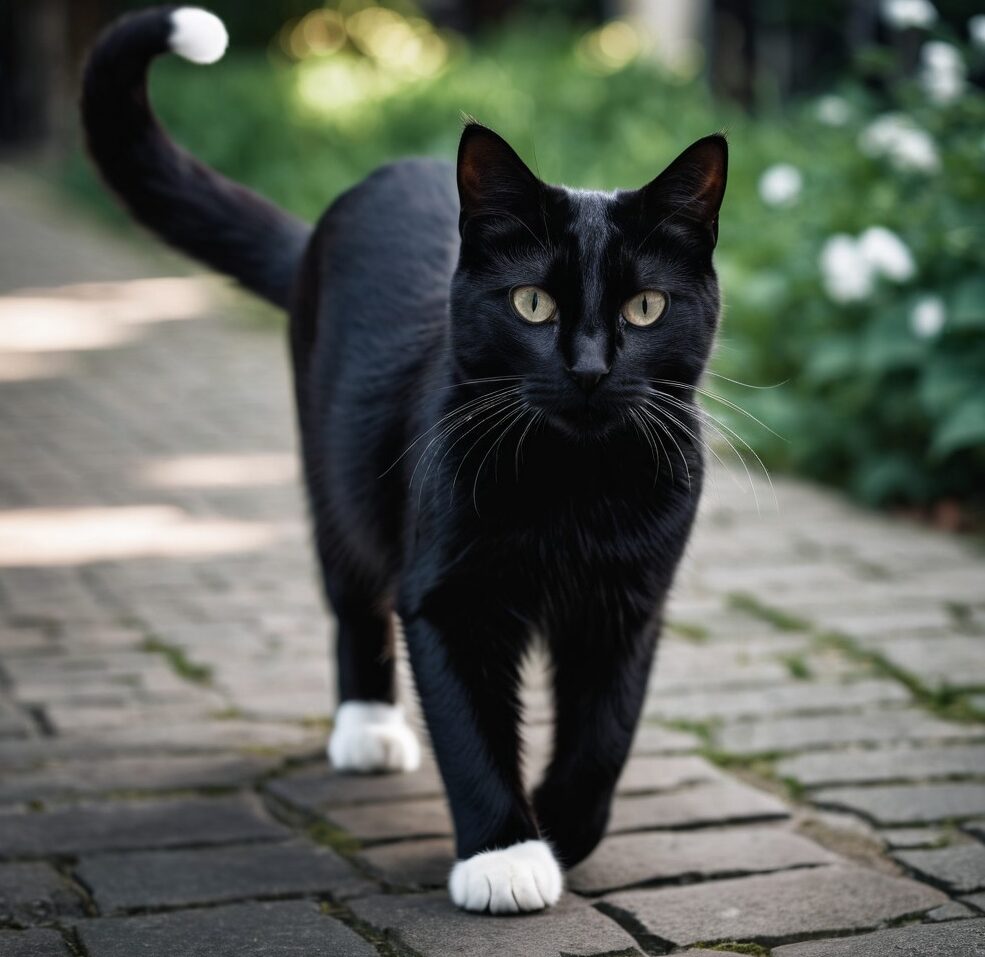 | |
| Mitted Cat Pattern 🧦🐾 Mitted cats have paws that are a different color than the rest of their legs, creating the appearance of “mittens” or “socks.” These adorable markings often include “gloves” on the front paws and “booties” on the back paws. This charming pattern adds a playful and elegant touch to their overall coat. The contrast between the paws and legs makes them stand out as unique and endearing. | |
| Breeds Known for this type | Genetic Factor |
| Ragdoll, Birman, Snowshoe, and Siamese 🐱. | Minor white spotting gene (S), giving white paws similar to mittens🧦✨. |
Blaze Cat Pattern
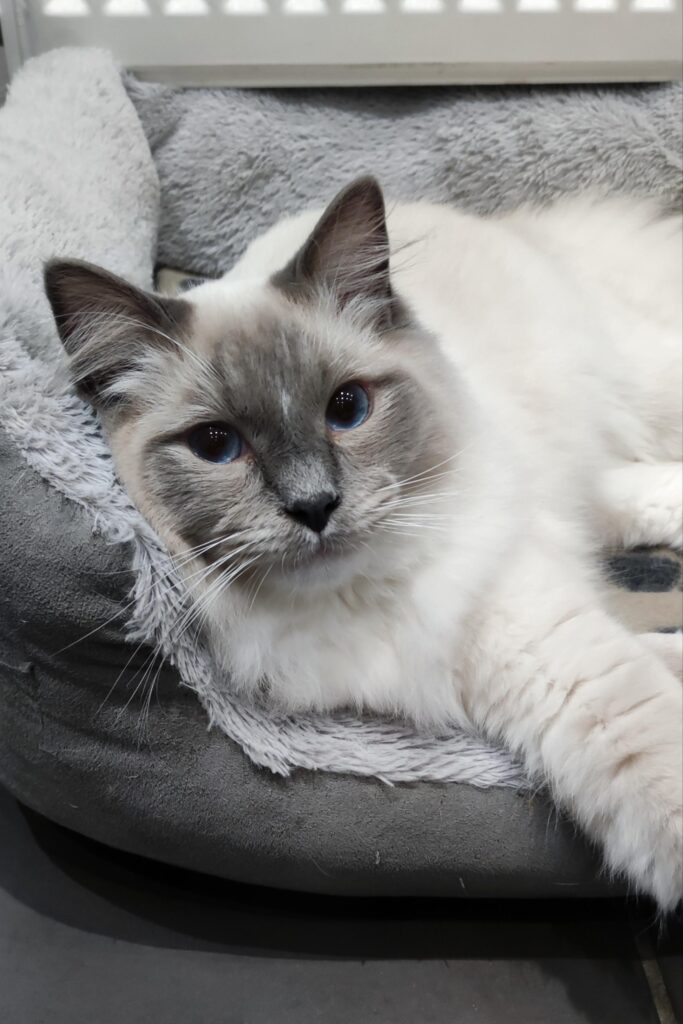
| |
| Blaze Cat Pattern ✨🐾 A blaze is a white stripe or patch running down the center of the forehead, often extending between the eyes and along the nose. This striking marking adds symmetry and elegance to bicolored and tricolored cats. The blaze is frequently accompanied by other unique markings like buttons (spots on the chest or stomach) or laces (white fur running up the legs). It’s a beautiful and eye-catching feature in many cats! | |
| Breeds Known for this type | Genetic Factor |
| Persian, Birman, Ragdoll, and Domestic Shorthair 🐱. | The white spotting gene (S) forms a stripe of white fur down the center of the face. |
Choosing a Cat Based on Coat Color and Pattern

Genetic Factors Explained
Ever wonder why some cats have stunning, one-of-a-kind colors and patterns? Genetics play a big role in creating that beautiful coat your cat wears so proudly. Genetic mutations can give rise to those rare hues, while selective breeding has helped bring out unique patterns over generations. Every color and pattern—whether it’s a solid coat, sleek tabby stripes, or even the rare lilac shade—is shaped by specific genes. Here’s a quick look at the science behind the colors:
| Coat Pattern or Color | Genetic Factor | Additional Notes |
| Solid | Absence of the agouti gene (a/a) results in a solid coat color without tabby patterning. | – |
| Tabby | Agouti gene (A) controls the distribution of pigment, allowing tabby patterning. | Types of Tabby Patterns |
| Classic Tabby | Tabby gene variant (mc), leading to swirling or blotched patterns. | Swirling/blotched patterns |
| Mackerel Tabby | Dominant over classic (Mc), producing narrow, vertical stripes. | Narrow, vertical stripes |
| Spotted Tabby | Modifier on the tabby gene, turning stripes into spots. | Stripes become spots |
| Ticked Tabby | Unique pattern with agouti hairs spread across the coat, lacking traditional tabby stripes. | Agouti hairs, no traditional stripes |
| Tortoiseshell | Requires both black and orange genes (O/o) on the X chromosomes, resulting in a mix of black and orange patches due to X-chromosome inactivation. | Result of X-chromosome inactivation |
| Calico | Similar to tortoiseshell but with additional white spotting from the white spotting gene (S), creating distinct orange, black, and white patches. | Distinct orange, black, and white patches |
| Dilute Calico | Dilution gene (d/d) changes orange to cream and black to gray. | – |
| Dilute Tortoiseshell | Dilution gene (d/d) creates softer cream and gray patches. | – |
| Colorpoint | Temperature-sensitive albino gene (cs), resulting in darker colors on cooler parts of the body like ears, paws, and tail. | Darker colors on cooler body parts (ears, paws, tail) |
| Smoke | Caused by the inhibitor gene (I), which results in a coat where the tips of the hair are dark, while the base is white. | Dark hair tips with white base |
| Shaded | Inhibitor gene (I) influences pigment distribution, leading to color only on the outer part of each hair shaft, creating a gradient look. | Color gradient on each hair shaft |
| Shell / Chinchilla | Strong expression of the inhibitor gene (I) leads to very limited color on the tips of each hair, giving a nearly white or silver appearance. | Nearly white or silver appearance |
| Van | High expression of the white spotting gene (S), with color only on the head and tail. | Color only on head and tail |
| Harlequin | Moderate white spotting gene (S), leading to larger colored patches spread across a mostly white coat. | Larger colored patches on a mostly white coat |
| Tuxedo | Lower expression of the white spotting gene (S), creating a black and white coat resembling a tuxedo. | Resembling a tuxedo |
| Cap-and-Saddle | Variant of white spotting gene (S), with color primarily on the head and back (saddle area). | Color on head and back (saddle area) |
| Cow | Unique spotting variation where the white spotting gene (S) causes color in large, rounded patches resembling cow markings. | Large, rounded patches resembling cow markings |
| Mask-and-Mantle | White spotting gene (S) creates color mainly on the face and back. | Color mainly on face and back |
| Magpie | Expression of the white spotting gene (S) with random, asymmetric black or colored patches on a white coat. | Random, asymmetric patches on a white coat |
| Locket | A small expression of the white spotting gene (S), creating a single white spot, often on the chest. | Single white spot, often on chest |
| Mitted | Minor white spotting gene (S), giving white paws similar to mittens. | White paws like mittens |
| Blaze | The white spotting gene (S) forms a stripe of white fur down the center of the face. | Stripe of white fur down the center of face |
| Bicolor | White spotting gene (S) results in roughly equal amounts of color and white. | Equal amounts of color and white |
| Bicolor Pointed | Combination of white spotting gene (S) and colorpoint gene (cs) leads to bicolor patterns with pointed features. | Bicolor with pointed features |
| Gray and White | Dilution gene (d/d) changes black to gray, combined with the white spotting gene (S). | – |
| Black and White | White spotting gene (S) on a black coat, creating a black and white appearance. | – |
| Orange Tabby | Orange gene (O) on a tabby pattern creates the classic orange-striped tabby. | Classic orange-striped tabby |
| Gray Striped | Dilution gene (d/d) with tabby pattern genes, lightening black stripes to gray. | Gray stripes instead of black |
| Ticked | Ticked tabby gene, producing an agouti pattern without stripes. | Agouti pattern without stripes |
| Piebald | Strong white spotting gene (S) creates large areas of white with scattered color patches. | Large white areas with scattered color patches |
Understanding these genetic factors doesn’t just help you appreciate your cat’s look—it can also give insights into their breed and even personality traits. Plus, the world of feline genetics adds a whole new layer of fascination for cat parents and breeders alike!
FAQs on Cat Coat Colors and Patterns
1. What Determines a Cat’s Coat Color and Pattern?
A cat’s coat color and pattern are determined by genetics, specifically the combination of dominant and recessive genes inherited from their parents. Key genes like the agouti gene (A), dilution gene (d/d), and white spotting gene (S) play significant roles.
2. What Is the Difference Between a Calico and a Tortoiseshell Cat?
- Calico: A tricolor cat with white as the dominant color, combined with orange and black (or their diluted versions: cream and gray).
- Tortoiseshell: A mix of orange and black without significant white patches.
3. What Are Bicolor Cats?
Bicolor cats have a mix of white and another color (e.g., black, orange, or gray). Patterns range from tuxedo (black and white) to van (mostly white with color on the head and tail).
4. Can Two Solid-Colored Cats Have Patterned Kittens?
Yes! If both parents carry the gene for a specific pattern (e.g., tabby or tortoiseshell), their kittens can inherit those patterns even if the parents appear solid.
5. What Is a Dilute Cat?
A dilute cat carries the dilution gene (d/d), which softens the base colors. For example, black becomes gray (blue), and orange becomes cream. Dilution gives a softer, muted coat appearance.
6. What Is a Ticked Tabby?
A ticked tabby has individual hairs with alternating light and dark bands (agouti hairs). This pattern gives the coat a “salt-and-pepper” or speckled appearance without traditional stripes or spots.
7. Why Do Colorpoint Cats Have Darker Extremities?
Colorpoint cats, like Siamese, have a temperature-sensitive gene (cs) that causes pigment to darken on cooler parts of the body, such as the ears, paws, and tail.
8. What Are Smoke Cats?
Smoke cats have dark tips on each hair and a white undercoat. This creates a shimmering effect, especially noticeable when the fur moves or parts.
9. Are Certain Patterns Linked to Specific Breeds?
Yes! For example:
- Tuxedo pattern: Found in Domestic Shorthair, Maine Coon, and British Shorthair.
- Colorpoint: Found in Siamese, Himalayan, and Ragdoll.
- Ticked tabby: Found in Abyssinian and Somali.
10. What Makes Silver and Golden Cats Unique?
- Silver: Result of the inhibitor gene (I), which limits pigment to the tips of each hair.
- Golden: A rare variation where the undercoat is a warm golden hue instead of white.
11. Why Are Most Calico and Tortoiseshell Cats Female?
The genes for orange and black coloring are located on the X chromosome. Females (XX) can carry both colors, while males (XY) typically carry only one.
12. What Is a Rare Coat Pattern in Cats?
Rare patterns include:
- Chinchilla/Shell: Almost white with a hint of color on the tips of the fur.
- Smoke: A dark coat with a white undercoat.
- Golden: A warm, golden-hued coat.
13. Can Cat Coat Colors Change Over Time?
Yes! Factors like aging, diet, and temperature can slightly alter a cat’s coat color. For example, some black cats develop reddish hues with age due to sunlight exposure.
14. Are Certain Coat Colors Linked to Personality?
While anecdotal, some believe:
- Orange cats are friendly.
- Black cats are mysterious.
- Tortoiseshells (torties) have “tortitude” (sassy personalities).
15. What Is the Rarest Cat Coat Color?
The rarest colors include:
Lavender/lilac and fawn, which require specific gene combinations.
Chocolate and cinnamon (especially in non-pedigreed cats).

